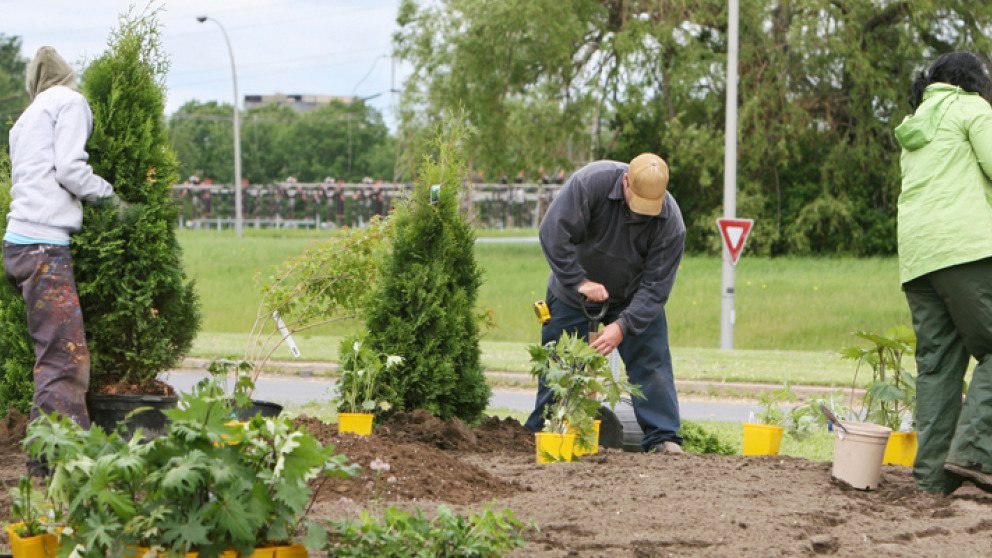Headline:
Choosing the Right Trees for Urban Greening

Many cities are currently creating more green spaces and planting trees. The growing momentum to increase the amount of green space in urban areas, seen, for example, in various ‘Million Tree’ campaigns, brings many benefits to urbanites. A reduction in summer temperatures, additional recreational opportunities, and storm-water control are among the motivations behind such programmes. Although these multiple benefits all speak for urban greening, programmes often fail to consider the drastic differences between urban and natural ecosystems and overlook potential downsides of urban greening.
Some tree species can lead to higher ozone levels than others
High anthropogenic emissions of air pollutants from cars, industry, and power plants, which do not exist in undisturbed ecosystems, are typical for cities. This has potentially detrimental impacts on air chemistry, because emissions of volatile organic compounds (VOC) from certain popular urban trees – e.g., poplar, plane tree and black tupelo – produce ground-level ozone when combined with anthropogenic emissions of nitrogen oxides (NOx). Municipalities that are actively enlarging their green spaces still tend to ignore this message. This is surprising, because the basic chemistry behind these interactions has been understood for several decades, and scientific studies continue to link VOC emissions from plants with elevated levels of ground-level ozone in urban and suburban areas around the world. Ozone has been associated with almost one million respiratory mortalities annually and also results in the loss of tens of billions of dollars of crop production globally. Growing scientific evidence of biogenic induction of ground-level ozone concentrations in urban and suburban areas makes us argue that interactions between plants and urban ambient conditions have to be taken into account in all efforts to create ‘naturopolises’.
Policies targeting the reduction of ground-level ozone in urban and suburban areas must consider a massive reduction of NOx levels. NOx are a family of highly reactive gases including nitric oxide (NO) and nitrogen dioxide (NO₂), which are produced during combustion. Sources of anthropogenic NOx include cars, trucks and various non-road vehicles (e.g., construction equipment, ships, airplanes, etc.), as well as power plants, cement kilns, etc. In the sunlight, NOx reacts with VOC and produces ozone. The reaction rate increases with rising air temperatures. Limiting emissions of VOC from both biogenic and anthropogenic sources should be envisaged until NOx concentrations in cities and suburban areas have diminished. Certain tree species that are known to be high biogenic volatile organic compound (BVOC) emitters, such as poplar or eucalyptus, should possibly be banned from being planted in large quantities in urban and suburban areas. In addition, a reduction of urban areas under turf grass could also contribute to improving air quality. Turf grasses cover a sizeable area in some countries and are mowed at least once a week in warm weather. The oxygenated BVOC emitted from freshly cut grass as part of a wound-defence mechanism can also lead to the production of ozone. Replacing the turf grasses with vegetation that requires little maintenance (e.g., meadow flowers, shrubs, xeriscape plants, etc.) would solve the problem with emissions of oxygenated BVOC.
For more information on this topic, see: Churkina, G., Grote, R., Butler, T.M., Lawrence, M., (2015). ‘Natural selection? Picking the right trees for urban greening’ in: Environmental Science & Policy 47, 12–17. Also available via the IASS publication database.
Photo: (c) istock/WoodenDinosaur

